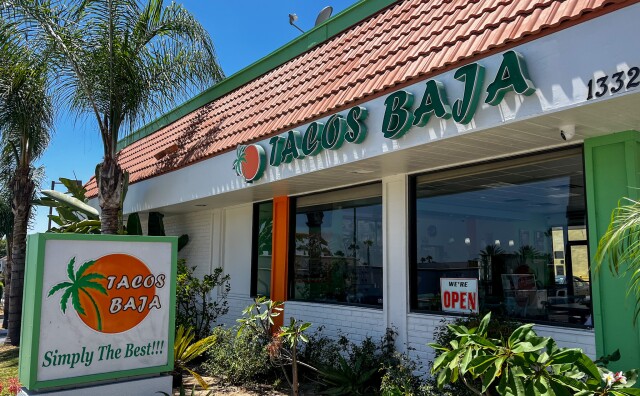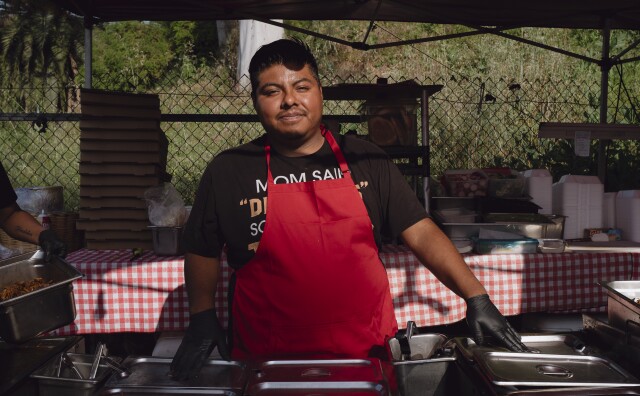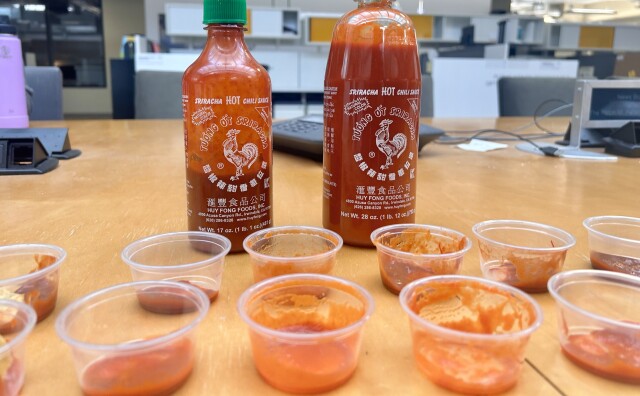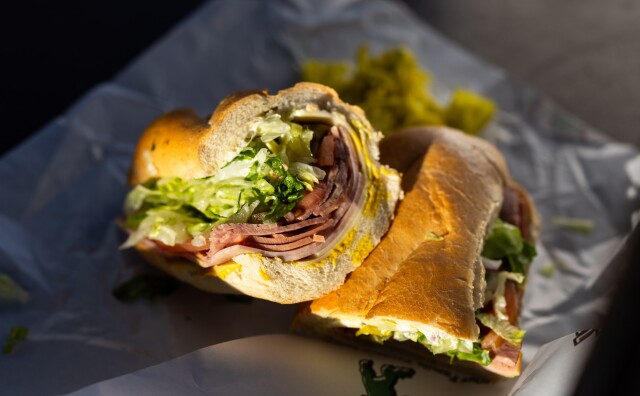With Los Angeles County in the yellow tier, restaurants and bars that offer food have been able to increase the number of people they can serve while breweries, wineries, distilleries and bars that don't offer food have finally been able to welcome customers inside their premises.
These are all good things for the hard-hit hospitality sector but the reopening also presents challenges, as several people in the dining and drinking business told AirTalk.

Staffing And Safety
Although the economy is starting to rebound, many companies are having trouble hiring new employees or rehiring old ones. Many Americans worry about contracting COVID-19 on the job while others say they can't return to full-time, or even part-time, work as long as schools are closed for in-person learning, reports the Wall Street Journal.
Restaurant jobs have several added layers of difficulty. Wages aren't high. The work is physically demanding. You typically have to be on your feet for all or most of your shift. Many of these jobs don't include paid time off or employer-sponsored healthcare. Plus, cramped kitchens where physical distancing is impossible are a perfect way to transmit COVID-19. A University of California study backs that up. Released in January 2021, it found that during the pandemic, cooks had one of the highest mortality rates of any kind of worker.
With all these drawbacks, is it any surprise that many restaurant workers have taken stock of their jobs and decided the wages aren't worth the risk?
"I just want some health insurance and enough money to support my family. Maybe some retirement benefits, so I'm not destitute. But right now, the industry is super sick, all the work is consolidated, and I think without assistance and any sort of unionization, it's really just showing how alone independent restaurants are," Hunter Pritchett, the former chef-owner of Atrium, told LAist last December. Pritchett left his post at Atrium in September 2020.
That leaves restaurateurs between a rock and a hard place as they try to figure out how much they can raise salaries to entice employees while still making a profit. During the past year, Sandra Cordero, owner and executive chef of Gasolina Cafe, in Woodland Hills, has dealt with a staffing shortage while revamping the establishment's menu.
"It's been a long couple of weeks," Cordero says.
Since expanding from a 750-square-foot space to a 2,000-square-foot space in November 2019, she has tried to provide customers with a "full service experience." That means she has, once again, allowed indoor dining, and she added dinner service (the cafe previously served only breakfast and lunch). But finding enough employees to staff those expanded hours has been a challenge.
"Pre-pandemic, I had about 30 employees, full-time. It’s hard, we don’t get a lot of applicants to our ads. I literally just hired a bunch of people in the last three weeks, so I'm back to 20 right now," Cordero says.
For Kim Prince and her Baldwin Hills fried chicken spot, Hotville Kitchen, everything is a balancing act. She wants to maintain safety protocols to protect her skeleton crew. Prince has held off on relaunching indoor service until she can afford to hire more staffers. To do that, she needs more money but she worries that raising prices will alienate customers who, she says, have already pointed out how much "just one piece of [her] chicken costs." (At Hotville, a chicken sandwich will run you approximately $11 as will a 4-piece order of jumbo chicken wings.)
"We"re paying that top shelf price for [chicken]. Everybody turned to chicken during COVID. Your fine-dining establishment started doing chicken sandwiches. Chicken will always be the highest, the most sold protein in the world," Prince says.
There's another sharp bone poking at Prince: the cost of chicken. This trend is a major problem not just for Hotville Kitchen but for many Los Angeles restaurants.
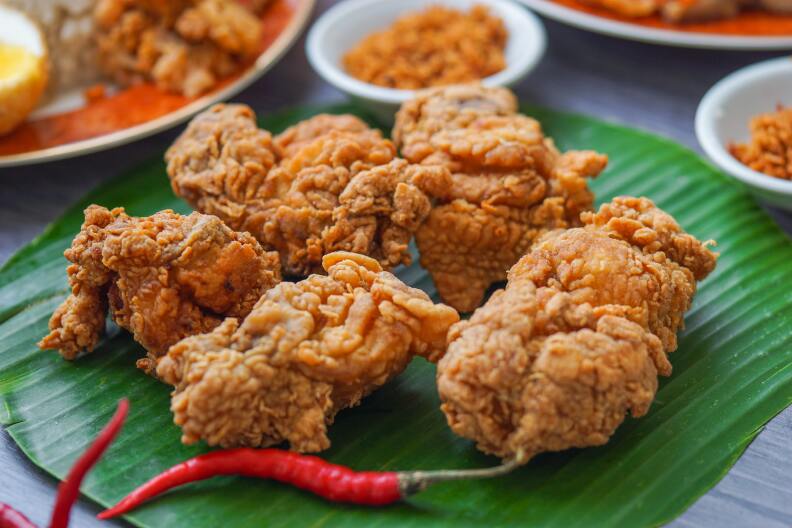
Rising Food Costs
Data from the most recent Bureau of Labor Statistics report says Los Angeles saw a 4.1% increase in food prices between April 2020 and April 2021. The cost of meat, poultry, fish and egg products rose 6.6% in that same period.
A year ago, chicken used to cost Prince $2 to $3 per pound. These days, it costs her almost $7 a pound.
"I'm a chicken establishment… Those prices can shut me down, literally. You can't just close because you can't afford it," she says
Rising food costs aren't the only sourcing issue restaurants face. What happens when an integral ingredient goes MIA? Restaurateur Jessica Feltham, co-owner of Sonoratown in downtown Los Angeles, has struggled with both challenges.
"Our sales can look really good on paper but we've also had rising meat costs [and] certain ingredients will just have gone missing throughout the past year, which is not so great for us because our whole idea is to bring a specific type of taco from my partner's hometown," Feltham says.
Sonoratown is known for chef and co-owner Teodoro Diaz-Rodriguez, Jr.'s San Luis Río Colorado-style tacos made with pinto beans and a high-quality chuck steak called agujas. During the pandemic, Feltham has struggled to procure avocados, limes and pinto beans, which, she says, were "nearly impossible to find." The restaurant also had to pivot and start using short-rib sourced in the United States instead of the Sonora-style chuck they used to get from Mexico due to the 50-pound weight limit for transporting beef across the border. Ticket averages have shrunk. To compensate for the losses, Sonoratown didn't change its menu but it did introduce large, family-style meals.
"We do the same thing, the same menu throughout the whole pandemic," Feltham says. "It's not like there's a lot of opportunity for us to change trains and replicate a very authentic style of taco."

The Case Of Breweries
Breweries, wineries, distilleries and bars that don't serve food have been operating under different, and stricter, restrictions than restaurants.
Earlier in the pandemic, breweries were only able to operate if provided meals. Since most of these establishments don't have kitchens, they had to partner with food trucks or caterers to stay open.
"It's been challenging for us because the brewery tasting room model that doesn't typically have an in-house kitchen was categorized in a very different way," says Frances Cannon, executive director of the Los Angeles County Brewers Guild.
In the yellow tier, L.A. County's Department of Health finally allowed breweries to increase their indoor capacity to 50% or 200 people, whichever is fewer. Even so, breweries face the problem of revamping their spaces to accommodate physical distancing guidelines. At Brewyard Beer Company in Glendale, co-owner Kirk Nishikawa points out that enforcing the six-foot distancing guidelines between chairs is not feasible in a smaller space.
"Even though we're allowed to have 50% capacity, I can only fit 25% capacity in the tap room. No matter how good I am at shuffling things around, there's only so much space I have to work with. The only saving grace is the fact that we have an outdoor patio," Nishikawa says.
Cannon says that while increased capacity is great, it will be a while before the breweries can recapture their conversational pre-pandemic vibe.
"We're not at that point where [you can] belly up to the bar and chat with your beertenders about what they have going on. For us, we're very community-driven, and the fact that we're still within the confines of our tables and our household, definitely we haven't seen that spark come back to our businesses," Cannon says.
Although five breweries in the L.A. County Brewers Guild closed in 2020, five new breweries opened. Cannon credits the net-zero loss to the years-long process required to build a brewery. It involves acquiring industrial warehouse space and digging trenches as a drain for fermenters. Brewery owners who were already paying rent before production began, had to start selling.
"During the pandemic, we had breweries that were slated to open in the summer of 2020. They had no choice but to start producing product and opening their doors for to-go beers and hoping that Instagram marketing and word of mouth would get them along because at the end of the day, they were paying rent on a large industrial space. They wouldn't be able to open their doors in 2021 had they not at least tried to make some of that revenue [in 2020]," Cannon says.
Many breweries in the guild relied on selling draft kegs to local bars and restaurants before the pandemic. When closures hit restaurants last year, they pivoted into distributing their own packaged beer. But they ran into another hurdle.
The beverage industry is facing a pandemic-driven aluminum can shortage. Can't find six-packs of Cherry Coke Zero or your favorite IPA? Beverage brands have limited their production of "niche products." Molson Coors, parent company of Coors Brewing, has had to source cans from four continents to meet demand. Shipments of cans from abroad have also been delayed due to lockdowns.

Like many beer producers, Brewyard has leaned into distribution during the pandemic. With the can shortage, the company has faced long wait times. Nishikawa says that pre-pandemic, lead times for unlabeled cans would be on a week-to-week process and that labeled cans would take two to three weeks.
"Then COVID hit. We just saw those lead times go from three to four to four to six and then, eventually, six to eight [weeks]. And that kind of made things challenging because having a plan and having the working capital to buy stuff two months in advance for small breweries is pretty taxing," Nishikawa says.
On top of that, breweries had to deal with seesawing reopening, closing and re-reopening policies.
"The little spurts we were allowed to stay open did help slow the bleeding," Nishikawa says. "But it was also just exhausting. Just imagine starting a business and you have a plan and you have a concept. Then, every month, it's like, nope, you got to change your concept completely."
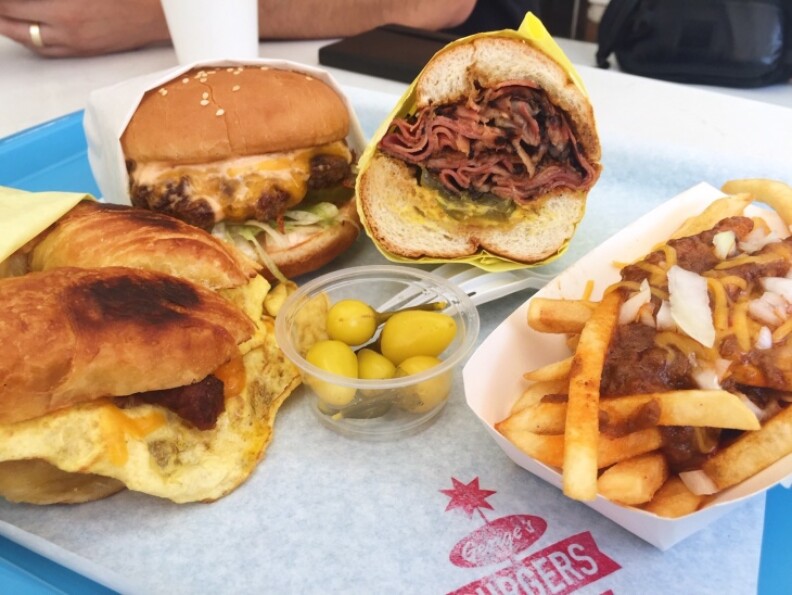
Bonding Through Struggle
Although the pandemic exacerbated wage issues, staffing shortages and safety concerns, many people in the hospitality industry also found a wellspring of community support.
Prince points out the camaraderie between restaurants in and around the Baldwin Hills Crenshaw Plaza, which houses Hotville Kitchen as well as Post and Beam and The Kickin' Crab. She has tons of examples of neighboring businesses helping each other out: how the manager of the Taco Bell across the street gave tacos to Hotville employees as thanks for keeping Hotville's bathrooms open to Taco Bell customers and employees or how the restaurants in the area all pointed their security cameras in each other’s direction to protect stock during last year's protests. Prince, along with Cordero, also helped found the nonprofit Regarding Her, which hosted a 10-day takeout food fest in January and launched a relief grant program this week to support L.A.'s women-owned restaurants.
"When malls were closed down last year due to COVID, people thought that the restaurants [in them] were closed. It was a challenge to get people to recognize that yes, we're still open," Prince says.

Armando De La Torre Jr. says the brick and mortar shops surrounding his restaurants and their high level of foot traffic helped bring customers to his businesses, even during the pandemic. His businesses have, in turn, driven customers to nearby stores. With his father, he co-owns longtime Boyle Heights favorite George's Burger Stand, Playita Mariscos in Silver Lake and local taco chain Guisados, which has multiple L.A. locations.
"As my business starts to get busy, people are looking for something to do before they eat or after they eat, so they take a stroll down the street, and maybe visit some mom and pop shops, retail shops," De La Torre Jr. says.
Breweries experienced a similar sense of community, especially when dealing with the aluminum shortage, according to Cannon.
"Someone would get a pallet of blank cans, and someone would say, 'Hey, can somebody help us out with some cans before our shipment comes?'," she says. "That was really a hopeful and beautiful thing within our industry."
Regardless, the landscape for restaurants and bars won't look the same as it did before COVID-19. Prince believes the pandemic could change the hospitality industry for the better.
"We knew [everyone] by name, we don't just know them as a customer order number," Prince says. "That's why I'm looking forward to opening back up again. We built such a kindred spirit and connectedness over the past 14 months. Being open and back to normal was not going to change the connection. That's a blessing that COVID brought."
Click here to listen to the entire AirTalk conversation with most of these restaurant and brewery owners.


